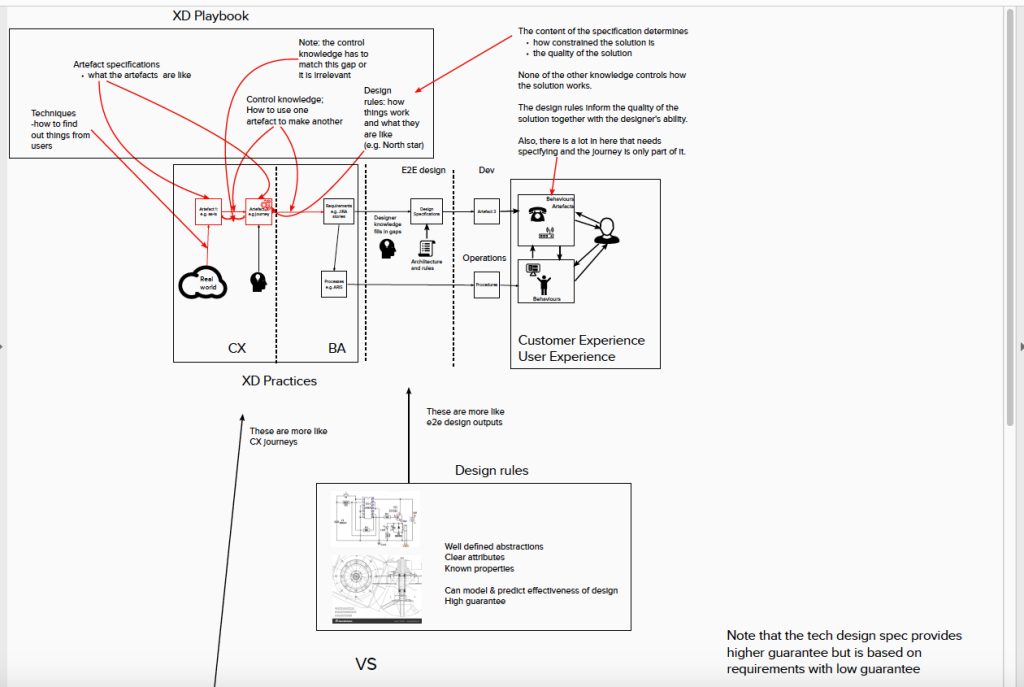Notes from the Coal Face
Experience Design (XD)
Some notes from the coalface: For the last few years I’ve been back in the ‘experience’ fold and am in a team currently known as ‘XD’ for Experience Design (‘currently’ because we spend more time in reorgs than in a stable structure! Rearranging reporting lines is guaranteed to solve all possible problems.). Anyway, Experience Design is supposed to indicate a combination of ‘Customer Experience’ and ‘Colleague Experience’ but in practice it’s much more of the latter and less of the former. In reality, most of the team are business process designers and much of the work is done using a tool called ‘ARIS’ which uses a fairly widely used notation called BPMN (business process modelling notation). Unfortunately it’s such a cumbersome tool that a lot of design decisions are made to suit whatever is expedient given the limitations of the tool and the notation! Interestingly, UX is treated as a separate ‘add on’ to CX. We’ve also got an interesting practice whereby the whole customer experience is reinvented for each product that launches, but as its so difficult to change anything it turns out to be pretty much the same each time, or to have minor variations for each product that just create confusion. Consequently, most of the team is kept so busy continually reinventing the wheel there is hardly any time left to improve anything.


Happy Path Processes
I’m fortunate to be working on a more ‘green field’ project where we have a bit more latitude, but at this stage of the game that largely involves designing very simple ‘happy path’ processes then tracing individual data items through them to make sure users are going to be presented with the right bits to do their job – not as straightforward as you might imagine, because adding an attribute into a system interface is a bit of an undertaking. Even identifying which attribute is required can involve significant work – we recently required one called ‘port speed’ and were excited to discover the product (data) model contained several similarly named attributes with no indication of which was which.
Benefits
That said, the benefit of being on this project is that we’re less constrained in how we’re working and free to model things in whatever way fits what the system designers want to know. The wider team, especially managers, have the notion that they should be establishing ‘best practice’, which generally involves attempting to use whatever document has been well received on a single project (usually only because someone put a lot of work into it) as a template and then wondering why the next project struggles to use it on a slightly different problem. I’ve reminded them of the maxim that ‘if all you have is a hammer, everything looks like a nail’, but it doesn’t seem to sink in. It also doesn’t appear that there has ever been any work done to find out what the recipients of our designs need – they usually just wait for us to produce the first draft and then ask us to add whatever they think is missing and claim that it has always done that way, was due months ago and has been holding them up!
PS
By the way – if you thought there was some disappointing literature associated with UX, have a look at CX! It’s something else.